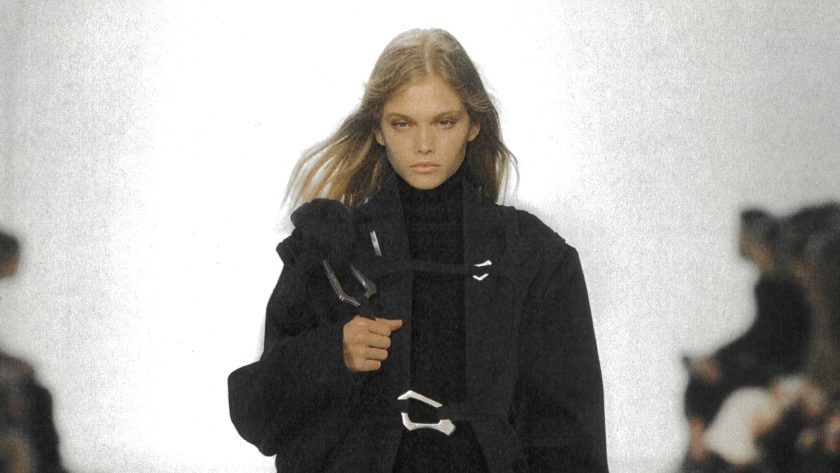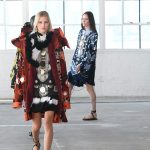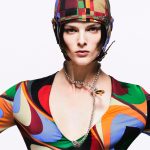As difficult as it might be to believe, there is a realm in which the freeform craftiness of Collina Strada coexists with the sparse utilitarianism of Heliot Emil. It’s called AI. Both Hillary Taymour and Julius Juul took the decision to feed their past work into a computer (Juul added this season’s designs as well) and then started editing and puzzling out the machine’s translations of their distinct DNAs into garments that people can wear. In both cases it required human labor. “We’re not at the stage yet,” said Juul, that AI can replace people in the design process.
It makes sense that the Juul brothers (Julius and Victor are creative and business directors, respectively), would be among the first in line to experiment with this new technology. Fashion tends to be shy about such things, often employing a silver-and-white retro-futurism as shorthand for things tech and seems happy to leave it at that. The opposite is the case at Heliot Emil, where the focus is solidly on what’s next. “For us, it’s always been about trying new innovations. We always try to incorporate new things, whether it’s 3D printing or doing a digital show. We want to see how that interacts with what we’re doing so that we don’t just become repetitive,” said Jul.
The brand’s aesthetic is hard, sleek, streamlined, features a lot of hardware, and is not especially emotional. Funnily enough spring’s man-meets-machine lineup had unexpected poetry that was linked to the increase of draping, which took both classical and deconstructed forms. “I think (this AI experiment) has taught me quite a lot about looking inwards,” noted Juul. It also stretched the team creatively on a material level. “It was so interesting to see all of the signatures that the algorithm spits back at you, like the metal details, the trims, those kind of things, but given that it has less boundaries than what we have in reality, it also came back with some very interesting things that if you looked into closely, can’t be created in reality: seams that there’d be no way to finish, or a part coming out of nowhere. That was a very interesting complexity to grasp; the machine doesn’t understand physics in the real world.”
One of the workarounds Juul and team found was to make use of suspension techniques, many of which don’t visibly involve hardware. There was less (puffy) volume and more layers and draping, much of which was overcomplicated but did create a welcome sense of flou, which moved the general vibe from Rick and more in the direction of Ann 2.0. Simply put, this collection was surprisingly pretty. It was also overlong. An edit would have made the message clearer.
The dichotomy between human and machine was echoed in the play of organic against engineered, the material and the abstract. AI, noted Juul struggles with the latter, but designers have to deal with intangibles as well. “Fashion is a reflection of how we all feel and act in one way or another,” he noted. “There are things that we’re consciously doing, and then there are subconscious influences” in collections as well. Heliot Emil is a resolutely intentional brand to which it seems technology brought, or uncovered, an unexpected softness.



